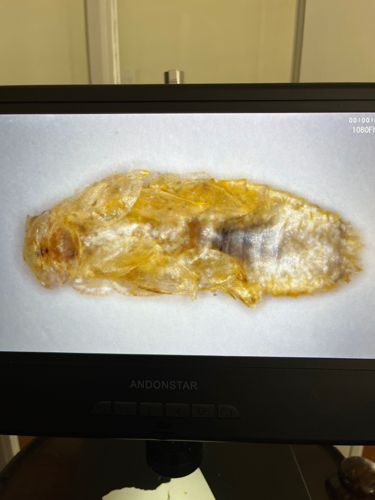Cockroach nymph (molt)
Scientific Name: Blattodea (various species)
Order & Family: Order Blattodea, Family Blattidae, Blaberidae, Ectobiidae, etc.
Size: Cockroach nymphs vary significantly in size during their development, from a few millimeters after hatching to several centimeters before their final molt. The size of the molt indicates the size of the nymph at that stage.

Natural Habitat
This is a shed exoskeleton (molt) of a cockroach nymph. Cockroaches themselves live in a variety of environments, from tropical forests to human dwellings. They prefer warm, dark, and humid places, often found in kitchens, bathrooms, basements, and behind appliances.
Diet & Feeding
Cockroaches are omnivores and scavengers. Their diet includes almost anything organic: food scraps, crumbs, grease, decaying matter, toiletries, glue, soap, and even other insects or their own molts and feces.
Behavior Patterns
Cockroaches undergo incomplete metamorphosis, meaning they hatch from eggs as nymphs that resemble smaller versions of adults, without wings. Nymphs molt multiple times (shed their exoskeletons) as they grow, with each stage called an instar. This image shows a shed exoskeleton. They are primarily nocturnal, social insects, and exhibit thigmotaxis (preference for tight spaces).
Risks & Benefits
Risks: Cockroaches are considered pests. They can transmit bacteria and pathogens (e.g., Salmonella, Staphylococcus, E. coli) to humans through their feces, saliva, and body contact with food preparation surfaces. Their presence can trigger allergies and asthma in sensitive individuals due to allergens in their feces and shed skins. Benefits: In natural ecosystems, some species play a role as decomposers, breaking down organic matter. However, in human environments, their presence is almost entirely detrimental.
Identified on: 9/20/2025